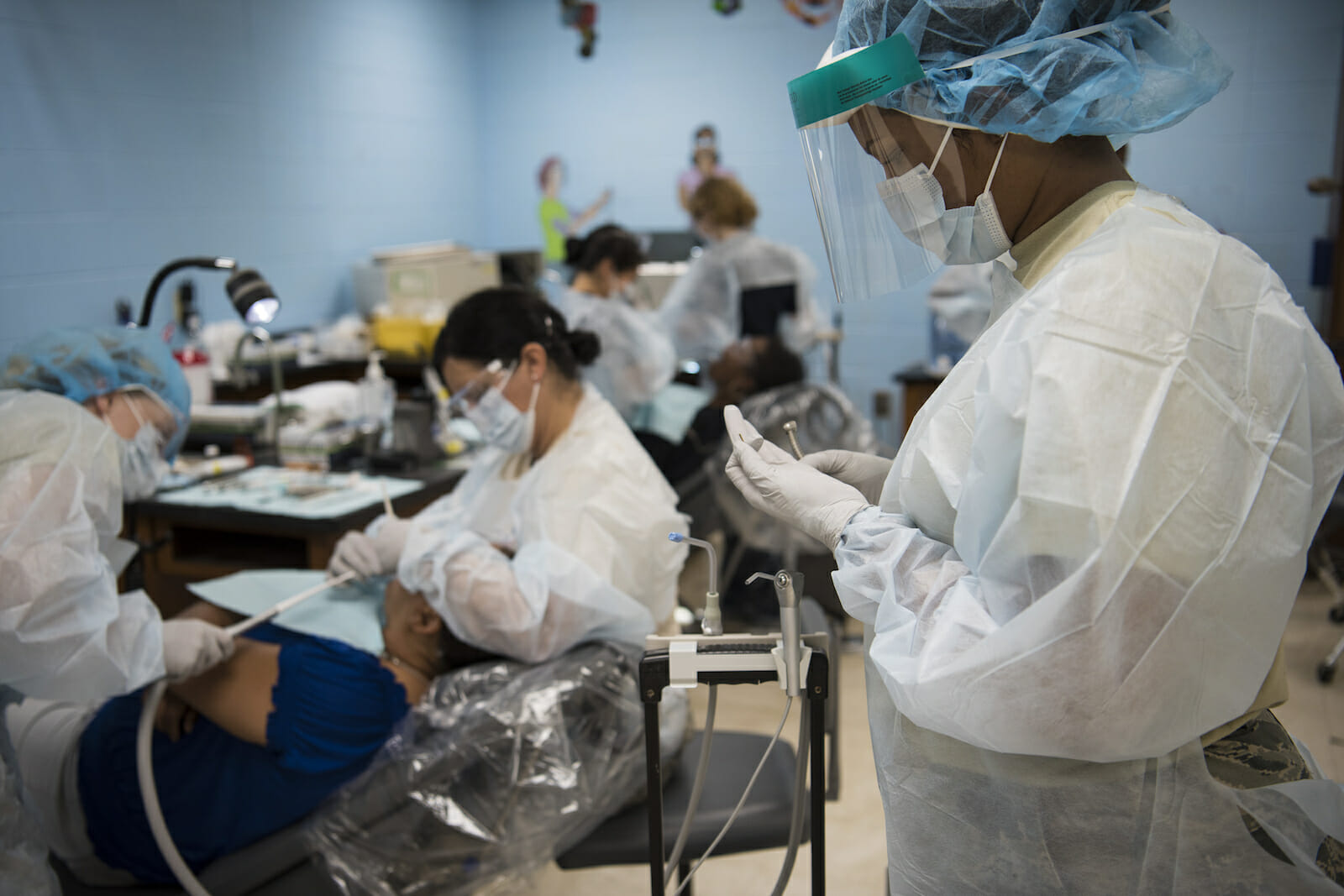
Health
How Will Medical Professionals Respond to the Uncertain Future of Our Healthcare System?
The healthcare system in America is broken — there can be little doubt about that. The Affordable Care Act had a long and convoluted path from an idea to a federal law — and even then, the results felt lackluster. It forced private insurance companies to cover new customers who wouldn’t have been covered otherwise, including people with pre-existing conditions. That’s a good thing.
But even with one significant barrier to healthcare access lowered, these many years later, the American healthcare system still fails to provide coverage for as many as 31 million citizens. Where things go from here is very much an open question, and there are many opinions and solutions. But on this issue, opinions from medical professionals are worth taking seriously.
The Recent History and the Near Future of American Healthcare
Some of the terms we use to talk about healthcare are widely misused. “Socialized” medicine is a good example. If you pay taxes, you’re already taking part in socialism. If we didn’t, Social Security, Medicare and Medicaid wouldn’t function. So, we take part in the social contract.
Another term that’s vital to understand is the “safety net.” The “social safety net” refers to all the programs that make low-wage life a little more livable for millions of Americans.
However, “safety-net providers” is a little different. It refers to a specific type of medical provider: one that provides care to anyone who needs it regardless of insurance status or their ability to pay. In many communities in America, safety-net hospitals and other facilities are the only available providers of critical services, including in many cases assistance with behavioral health issues.
Hospitals like these are, by design, non-profit facilities. They have small operating margins and remain useful thanks to subsidies and reimbursements made through Medicaid and other public programs. Among essential hospitals like these, half of all their outpatients were either Medicaid recipients or had no health coverage.
In other words, public hospitals, many specialized providers, teaching hospitals, and community health clinics are already woven into the fabric of our nation and already rely on “public coffers” to provide service to uninsured persons. This is socialism — a small piece of it — working as intended. It would work even better if critical care providers could interface directly with a government-run healthcare program instead of throwing more money at the problem in the form of insurer subsidies.
The ACA’s coverage mandate for individuals was a reminder that we’re already part of a system and already help subsidize our neighbors’ emergency healthcare needs. It’s civilized, but it needs more work.
Where Do We Go From Here, and How Will Doctors Respond?
The next several phases of the evolution of America’s healthcare system are going to bring significant changes to how our hospitals operate. Step one is already complete — we had 20 million people sign up for healthcare for the first time between 2010 and 2016 thanks to the ACA’s Medicaid expansions.
The first result for medical professionals under a more socialized healthcare system is that there will be many more patients to treat. In a market economy, this might cause some practices, with their eye on long-term sustainability, to engage in acquisitions and mergers to shore up their competitiveness due to uncertainty over the next few years.
But they may also become more financially stable without such restructuring. The second implication for medical professionals and safety-net providers was that they saw their costs for uncompensated care drop by $6 billion between 2013 and 2014.
Unfortunately, the pushback from the political right against a more socialized healthcare system leads to attacks on multiple fronts. Obamacare provided provisions for individual states to expand their Medicaid program if they wished to — and so far, 31 states have taken them up on the offer and have seen their costs fall dramatically.
Unfortunately, even though they will continue to carry the burden of uninsured Americans, medical professionals in states that have not expanded their Medicaid program will see their federal subsidies reduced as the far-right American Congress continues to try to slash trillions from the national healthcare budget — including Medicaid allocations.
What Do Physicians Want?
American citizens have spoken — and a majority of us recognize the government’s responsibility to provide healthcare for all of our citizens. The ACA wasn’t healthcare’s final form — it was a consciousness-raising exercise. It convinced millions of Americans that letting insurers determine who can be a patient and who cannot is uncivilized and wasteful.
But what do doctors and our communities of medical professionals want from a “reformed” healthcare system in America? Not surprisingly, they want the same things as citizens and patients — the removal of the profit motive. Some doctors go so far as to call the status quo, private insurance subsidies, “Band-Aids on an already oozing wound.”
Many healthcare providers and research groups and hospital networks throughout the country, representing tens of thousands of medical students and practicing physicians, have signaled their support for all of the most progressive proposals for reforming our healthcare system — including Medicare for all.
So, why haven’t we made this happen?
American healthcare failed for the same reason our school system failed — because the facilities that were already falling behind were likely to stay there. Sub-par schools saw their funding cut, which is the last thing we should be doing. A similar thing happened with hospitals. Studies indicate that safety-net hospitals are far more likely to see their subsidies and reimbursements cut, as a penalty for low efficiency and quality of care, than for for-profit hospitals. But is that surprising?
Once more, we see the invisible hand of “competition” and “market forces.” The very structure of the Affordable Care Act is broken because it forces healthcare providers to compete with one another, just as the “school choice” fallacy introduces competition into the education system.
But should schools and hospitals be competing with one another? Competition has manifestly not delivered a superior healthcare product in America compared with other developed nations — we rank last in accessibility of care, quality of health outcomes, equanimity between the poor and the rich, the cost of care, infant mortality, and every other metric worth measuring.
In the Netherlands, where healthcare is a social service just like paved roads, less than one percent of the population goes without healthcare coverage, and everybody’s needs are provided for through tax revenue. Healthcare is artificially more expensive in America because we let the market choose its customers. In civilized countries, everybody can take part — and the cost and the risk are distributed equitably and effectively.

